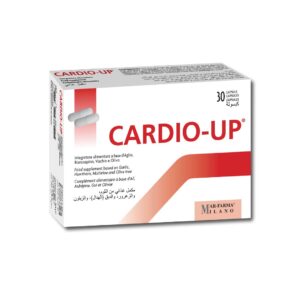
Heart and circulation
The heart is a pump that, with its contractions, sends blood to all organs and tissues of the body. Blood pressure is the pressure that the heart exerts to circulate blood in the body.
The pressure is measured in millimeters of mercury (mmhg). The value of the pressure is given by two numbers: the first is the systolic pressure (it is measured when the heart contracts and pumps blood into the arteries), the second the diastolic (it is measured between two contractions, while the heart relaxes and fills with blood).
It is considered “desirable” a pressure that does not exceed 120 mmhg for systolic and 80 mmhg for diastolic.
Hypertension develops when the walls of large arteries lose their natural elasticity and become rigid and smaller blood vessels shrink and blood pressure exceeds 140/90 mmhg.
Hypertension strains the heart, can increase its size, make it less efficient and promote atherosclerosis. That’s why people with high blood pressure have a higher risk of heart attack or stroke. In addition, hypertension can cause kidney failure and impair vision.





